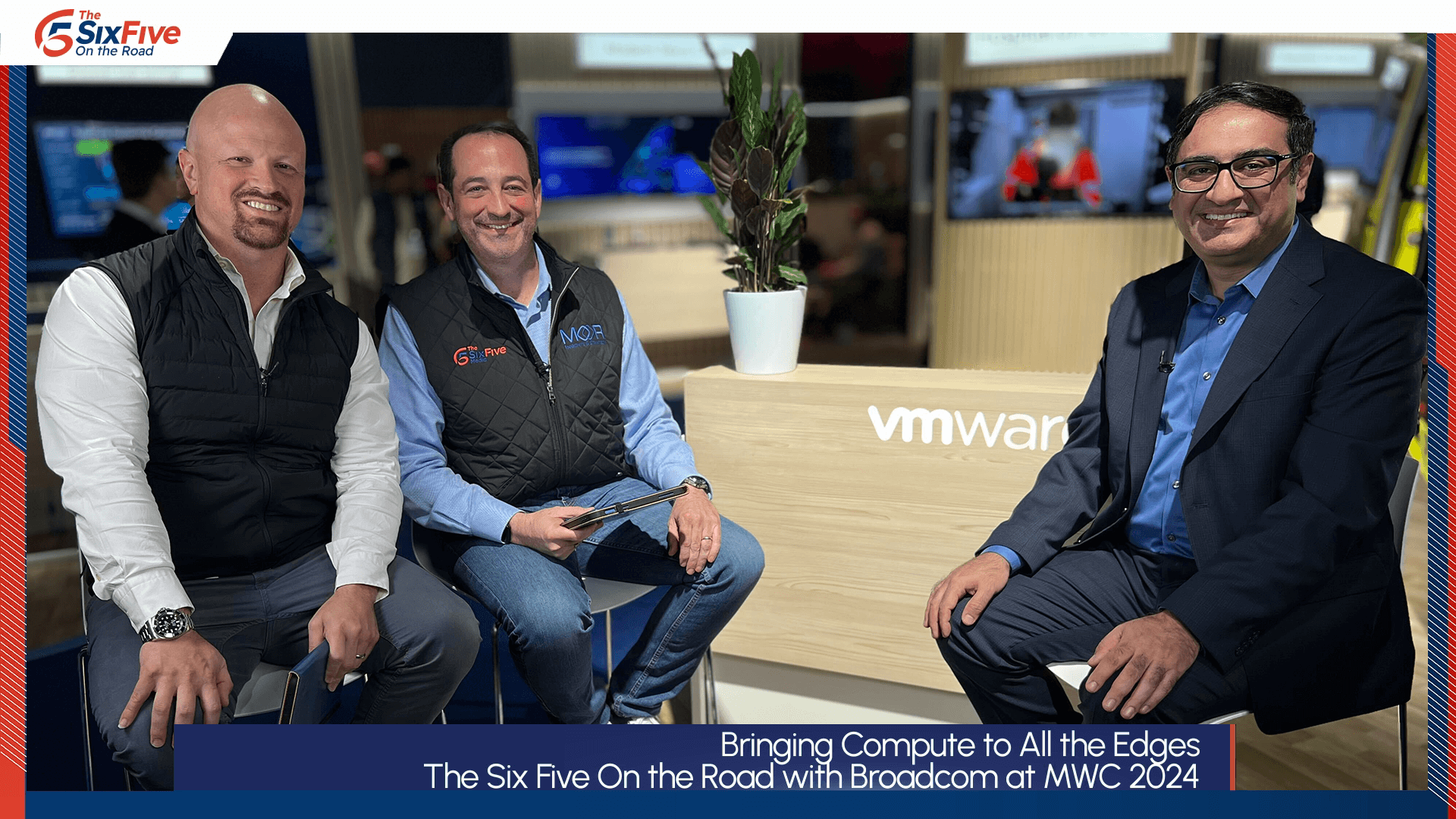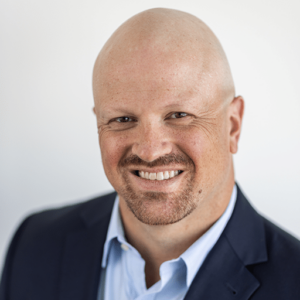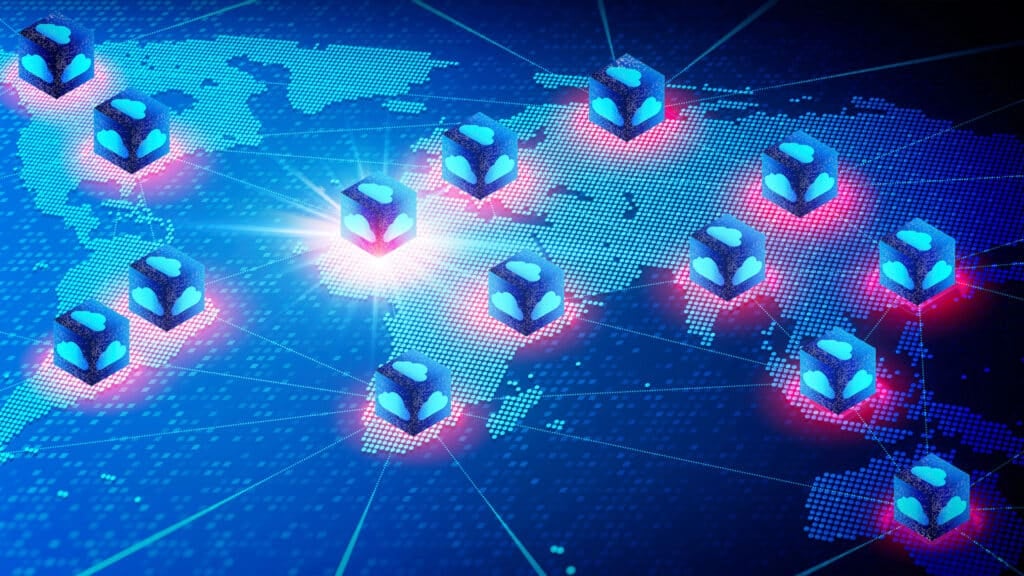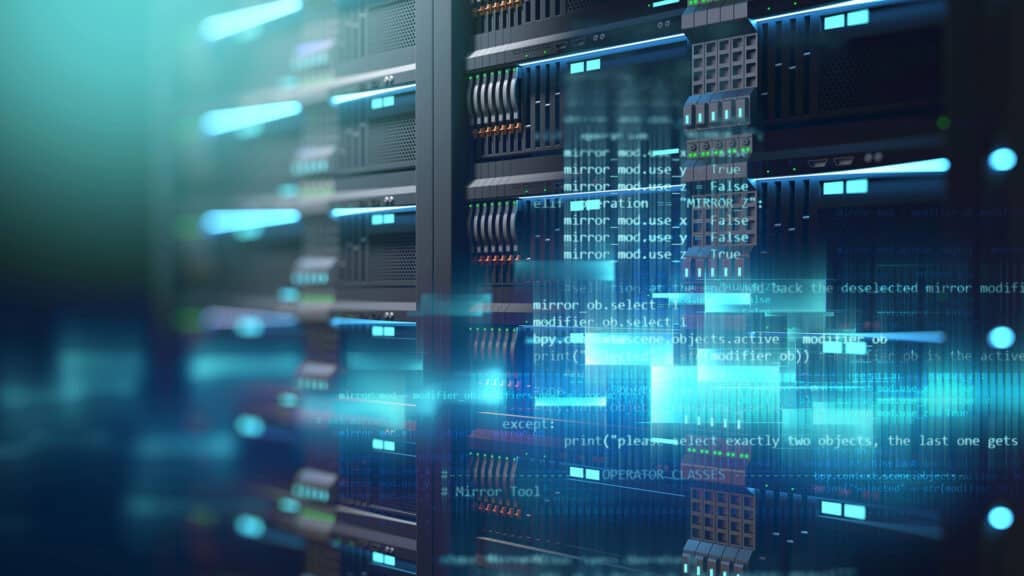On this episode of The Six Five – On the Road, hosts Daniel Newman and Patrick Moorhead welcome Saadat Malik, VP and GM of Edge Computing, Software-Defined Edge Division, Broadcom, for a conversation on bringing compute capabilities to all edges in the technology landscape during MWC 2024.
Their discussion covers:
- How the edge computing space has evolved over the last two decades
- The integration of Edge Compute into the concept of the Software-Defined Edge
- The diverse environments where Edge Compute can be significant
- The benefits of unifying compute and connectivity at the edge for customers
- The major challenges customers face in deploying compute solutions at the edge
Learn more at Broadcom.
Watch the video below, and be sure to subscribe to our YouTube channel, so you never miss an episode.
Or listen to the audio here:
Disclaimer: The Six Five webcast is for information and entertainment purposes only. Over the course of this webcast, we may talk about companies that are publicly traded, and we may even reference that fact and their equity share price, but please do not take anything that we say as a recommendation about what you should do with your investment dollars. We are not investment advisors, and we ask that you do not treat us as such.
Transcript:
Patrick Moorhead: The Six Five is on the road here in Barcelona, Spain. We’re at Mobile World Congress. We are here in the VMware brought by Broadcom booth, and it’s been an exciting, exciting show so far. And I mean MWC is back, I mean, it was hard to get even through hall three without having to maneuver like an ambulance going through the traffic. It’s been pretty crazy.
Daniel Newman: The ambulance actually is here in the Vmware booth, but fortunately it’s just a demo. But I’ve what, a decade of doing MWCs now with only the one year break where they took off and I do know the shortcuts now. The secret of hall three is you don’t walk down the middle of the aisle, you have to walk down the edges. Hall three is the epicenter of Mobile World Congress and for those of us that are experienced in this for sure. But it’s been a great event.
Look, you kind of see the world’s colliding.
You’re seeing everything from the apps running on mobile to Edge, network and compute, and of course you hear a little bit about cloud and transformation. I mean, maybe if you spend enough time, you’ll get a little AI. I mean, nobody’s really talking about AI, but you got a little, you get security, you kind of get it all. I said over time, you’ve seen this become from a mobile to an operator to a devices to even a little bit of an enterprise show. But it is still really about the mobile, the operator, the network, and it’s been good so far.
Patrick Moorhead: Well, Dan, one of the stalwarts of compute software, and in fact when I started at that ship company, the idea of virtualization was a new thing, right? Everyone was scared that we weren’t going to sell any more servers because server consolidation only needed one server. Joking, of course. VMware was the tip of the spear for that, and since then they’ve taken their stack to the Edge, added containers, all the manageability that you would want there. We just happen to have Saadat from VMware to talk about Edge compute. Welcome to SixFive, it’s great to see you again. Seen you at multiple companies, it’s great to see you here at VMware.
Saadat Malik: Dan, it’s a pleasure to be here and I’m so excited that you guys are here talking to all of us.
Patrick Moorhead: Absolutely.
Saadat Malik: This is very good. Welcome.
Daniel Newman: Super pleased to see Saadat on the docket. The company’s been in the Edge space for what? Two decades?
Patrick Moorhead: Been a long time. Weren’t you in high school then, Dan?
Daniel Newman: Actually, no. Sadly, I have hit that inflection in my career now where two decades only puts me in college.
Patrick Moorhead: There we go.
Daniel Newman: But talk a little bit about how you’ve witnessed the space, the VMware perspective. How did the Edge space evolve over the last few years, two decades?
Saadat Malik: Thank you Dan. I think we have come a long way, there is no question about that. So I started off in this Edge IoT area, over 20 years back I started IoT services organization at Cisco, was doing intelligent Edge at HP before running this business Edge computing business at VMware. So when I started off in this area, it was not very clear.
People were still not convinced that digitalization and technology could actually help them change how they did things at the Edge. So if you were a retail store manager, it was hard for you to conceive how all this technology with the cameras and all that is going to help you reduce theft. If you’re a factory floor manager, it was almost unthinkable that you’ll put stuff on your factory which could shut down and bring their entire factory down.
Daniel Newman: Yes, not a good thing.
Saadat Malik: It was unheard of. We’ve come a long way, so there’s a lot of acceptance that the outcomes that we want to achieve for these businesses, they can be delivered by what Edge does, by what technology and digitalization at the Edge does. However, that outcome being there now, we are at a different stage of our journey. Our customers are telling us that it’s great. We agree, we understand, we accept that technology and digitalization will deliver outcomes at the Edge.
But we don’t just want outcomes. We now want experiences, we want stellar experiences which will cement people in the outcome that we achieve. So that’s the part of the journey that I have joined VMware by Broadcom on where we are building a platform which would allow our customers to achieve that experience at the Edge. So not just deliver outcomes, but actually take it to an experience which is world class.
Patrick Moorhead: So VMware was one of the early movers on talking about the software defined Edge.
Saadat Malik: Right.
Patrick Moorhead: And all VMware products and services started off as a project, which is a declaration of the world that you’re building something and we solicit your input and we want to make it really good and also involve partners. How does Edge compute and software-defined Edge intersect? I mean, maybe it’s very straightforward, which is compute is software-defined, it’s nothing without it, but I think it’s a little bit more comprehensive than that. Can you talk us through that?
Saadat Malik: Absolutely. So let me share an actual real world example which would bring this home, this idea home. So when I work with our customers in the manufacturing space on the factory floor, for decades, literally decades, maybe a hundred years more, they’ve been stuck in this environment, right, where the hardware and the software that they have for PLCs and the other components on the factory floor, they’re stacked together. They go hand in glove, right? The hardware that you get, the software that you get, they are together. You cannot separate them, it’s not like you want a different software, you can just put it on there, it’s nothing like that.
Patrick Moorhead: It’s a very closed system.
Saadat Malik: Very closed system, and now they’re looking to change that. They have seen how software has changed other industries and they want software to change their way of working as well. It is very clear, right, the acceptance is there. So now what they’re saying is that, okay, on the PLC front, for example, let’s separate out the hardware and the software. We’ll get the best hardware, which works in our environment. We’ll get the best software which works in our environment, put them together. And when we want to change the software, not just upgrade, but even change it to something better, we can do that with the flexibility that everyone in the industry, in the IT industry enjoys.
That’s what we call desegregation, and that’s at the foundation at the core of software defined Edge. So what we are building, essentially in this case, is a software defined factory floor where the things that are done in the factory floor, which used to be hardware centric in the past, are now going to be software centric, defined and built on top of the software that we’re bringing to the table. This is about virtual PLCs. People used to talk about that, colleagues of mine at Cisco, they used to dream about having virtual PLCs on the factory floor one day. It’s real now. It is happening right now.
Patrick Moorhead: And the first movers, I mean for the folks who are leaders in manufacturing, a hundred percent have moved in that direction.
Saadat Malik: Yes, they have.
Daniel Newman: It’s interesting you bring up the factory floor. We’re obviously here at Mobile world, so the telco Edge. I mean, are there other environments, Saadat, you see this Edge compute really shining? Any other examples you might want to share?
Saadat Malik: I mean there’s lots of examples. And if you think about the various verticals, right? The two big verticals where there’s a lot of work happening is manufacturing and retail. That’s where the digitalization is happening at the Edge, in the retail environments we have stores, right? Where the store managers want to put 20 plus apps in a single store because of things that they want to achieve. They want to do point of sale, they want to do theft reduction, they want to look at the customer sentiment, they want to do employee management, they want to do a ton of stuff within a given store, and for that they want compute in there.
But I think I’ll reverse the question a little bit, right? So the question I think should not be that, because a lot of people when you ask them the question that where is Edge compute going to be relevant, they start thinking about the constraints that Edge poses and which verticals have the constraints. Meaning small amount of space, low amount of power, connectivity issues. The way I think about it is the opposite, right? Edge actually presents a lot of advantages. You are very close to where the data is being produced.
You’re very close to the people who are actually running the business, the people in the store, the workers on the factory floor, all these people are very close to what’s actually happening. So your ability to take advantage of that is not greater than any other place in your environment than the Edge. So that is a game changer, and that’s going to be a game changer for all verticals. So my answer to your question is there is no vertical where in the future I don’t see Edge compute. I see it everywhere because of the advantages that Edge brings rather than the constraints that has.
Patrick Moorhead: I noticed this yellow vehicle over your shoulder here, and we know because we interviewed one of your counterparts about SD-WAN. Now architecturally there could be and should be compute in here, correct?
Saadat Malik: Yes, there is absolutely. So let me give you guys a little bit of context here, right? So in the industry, when we look at the Edge, right, there are two kind of extremes. There is the enterprise Edge and there’s the operational Edge. Enterprise Edge is where all the knowledge workers are, right? The office spaces where people are using information, knowledge to do things, come up with ideas. A lot of us fall into that category. That’s the enterprise Edge.
On the opposite end of that is the operational Edge. This is the oil and gas fields, this is the factory floor environment.
Patrick Moorhead: OT?
Saadat Malik: OT, right? That’s the term that we typically use for it, IT and OT. Hospitals are somewhere in the middle. So they have the knowledge worker aspect of things. So they’re the doctors, the technicians trying to figure out ideas, what to do with certain situations. And then there’s the operational aspect where there’s all this equipment that has to come to bear and help save people’s lives. So this is what I describe as a hybrid environment, and this is an environment which is ripe for disruption with Edge computing. So what you see here is a hospital, it’s not just any hospital, it’s a hospital on wheels.
Patrick Moorhead: Got it.
Saadat Malik: So what we are doing in this particular demo is that we are solving for both those challenges, the knowledge worker challenge and the operational challenge. So the operational challenge I’ll shared with that, share with you that first, there is equipment in this ambulance that is critical for saving lives when the time comes.
Patrick Moorhead: Right.
Saadat Malik: Imagine, if for some reason, they forgot to bring two of the critical pieces of equipment when they were trying to resuscitate someone. How big of an impact that would be for that person and their family?
Daniel Newman: It’s life or death.
Saadat Malik: It’s life or death. So what we have, right, as part of the solution is an inventory management solution which live looks at what equipment is there and identifies if there’s any critical piece of equipment that is missing. That’s the operation side. Then comes the knowledge worker side, right? So you have technicians in this ambulance who very skilled people, they save people lives every day. But think about it, there are people back in the hospital as well who perhaps will have a little bit more experience in some of the specific issue that that person is having.
Daniel Newman: Maybe an emergency room doctor as an example.
Saadat Malik: When I was at HP, we were dealing with a situation in Ukraine where there were bomb blast injuries, which doctors on the ground in Ukraine were not able to handle because they had no experience of that. But we were able to connect them with people in other countries who did have experience. So doctors also have specializations, right? So the knowledge worker aspect of this ambulance is that we put a goggle on a person, a VR goggle, and the doctor back home in the hospital is able to connect through that, see what’s going on and help the technician address that issue.
So this has enabled both through the SD-WAN connectivity that we have, but also the compute that allows all this interaction to happen very quickly. You don’t want any delay in making any of this work. You don’t want the information that is appearing on the goggles to be delayed even by a second. That could mean the difference between life and death here. So this is frankly what excites me about this area, I mean the ability to impact people’s lives is, there is no other area in IT which other than Edge where you can make that happen. So that’s why I’m excited about this.
Daniel Newman: The use cases applications sound very encouraging and of course the idea that you can get something factually right that could save a life. Now, Pat, you and I have always said when we’re working on a weekend, why are doing this? This isn’t life or death. Well it actually turns out that higher up the stack you go, the more you kind of start to realize that what we do and the deployment of the right infrastructure and helping companies get to the right product services solutions can in fact be life or death.
Patrick Moorhead: Exactly.
Daniel Newman: And so I love that Saadat. So let’s wrap up with something that I think a lot of people are probably asking. We made the joke in the beginning about AI and I’m not actually going to ask an AI question, but I know we were talking to one CEO here at the show and he kind of said that people know they need to do AI but they don’t really know what yet they need to do. So they’re just kind of spending money and throwing it. Well with Edge and compute, I think they have a good understanding of what’s needed.
You got to remove latency, you got to make systems available all the time in motion, like you gave an example. But there are challenges deploying a network, especially things that are mobile and moving are very complicated. What are the challenges that you’re seeing and those in your business are seeing with customers, and what are you recommending to those that are trying to get this right? How do you give them the guidance to proceed?
Saadat Malik: That’s a great question. I think Edge and AI are two of the hottest areas and they’re coming together in this big ball of fire right now.
Daniel Newman: Yes.
Saadat Malik: So the interesting thing about Edge is, it’s so close to outcomes that you cannot dance around the issue of whether AI will work or not. It has to work, right? If a robot is swinging in a factory and the camera, the computer vision camera catches the fact the robot arm is going to hit a person, there has to be a decision right there and then to stop it and there are no ifs and buts about it. So it makes AI, the AI has to be very real. So let me tell you the challenges that I’m seeing, right? The challenges that we typically see with Edge environments in terms of the small amount of compute that is available, the connectivity back and forth with a central location, those things are true for our challenges for any application, but they’re also challenges for AI. So models which are very large are difficult to run in these environments.
So model pruning, making sure that you reduce the amount of the size of the model without giving up on the accuracy, that is important. It is an interesting concept that we are working on. So the Edge compute stack, this is the platform that we are bringing to our customers to make Edge deployment super easy. Part of that platform is this thing called VMware Edge cloud orchestrator. So generally what orchestrator does, it basically helps you deploy in a zero touch manner. Like you have 5,000 stores, it’ll help you deploy that in an easy way and then manage it. For AI, it does something very beautiful. So there’s this concept of federated learning, so let’s say you have 500 factory floors, on each factory floor, you’re doing QA of some device that you’re building, it’s being built in 500 factories.
So what we do is that instead of pushing the raw data up into the cloud or some central data center where it’s all going to be analyzed and learning is going to take place and some sort of a model is going to be built for conferencing, instead of doing that, we do the learning in each one of those factories separately. And then the only thing that is fed up is the model that is created based on that. All of that is brought together into one supermodel, which then is spread out. VMware Edge cloud orchestrator actually makes that federated learning come to life. So these are some of the things that have to be done to make AI real, but one thing is very clear, Edge customers don’t beat about the bush when it comes to whether AI works or not. It better work.
Patrick Moorhead: Right. What if I ask a follow up question on something you talked about, it kind of jogged my memory. So you talked about the disaggregation and some of the benefits in traditional manufacturing systems, but here we are talking about aggregating compute and connectivity. Can you talk to me about why disaggregating? We talk about why disaggregating is, but why is aggregating good?
Saadat Malik: That’s a very insightful question. So I think it’s important to realize that there are benefits and advantages and disadvantages of any kind of thing that you do, whether it’s aggregation, desegregation. So the advantage that we see of connecting the connectivity layer with the compute layer as well as the application layer. So we can combine-
Patrick Moorhead: And SaaS by the way, and security.
Saadat Malik: Security as well.
Patrick Moorhead: Right.
Saadat Malik: The advantage that we see is that the compute, right, it understands what’s going on in the application layer and can tweak what’s going on on that connectivity layer. So for example, I’ll give you an example of a retailer. They have like 800 stores, at any given time, 30% to 40% in the USA, 30% to 40% of those stores are disconnected.
Patrick Moorhead: Right.
Saadat Malik: So for the compute to know that this is the situation and tailor that connectivity based on when that connection is available, how expensive it is and all that, that is very valuable to our customers. But I am with you, there are also disadvantages when we connect things together.
Patrick Moorhead: So listen, the industry is clearly moving towards aggregation is good when there’s a clear incremental benefit between the layers. And all things equal, as you get into a more space constrained environment, and I’m not going to correlate the smartphone or the tablet with Edge compute, but it’s like tight integration seems to be more important. The smaller the environment that you have to operate in … And I’m not confused that the Edge can be the compute in the hospital and in the ambulance, but also Ray’s Tile Flooring in a gigantic retailer.
Saadat Malik: Right.
Patrick Moorhead: But you have to, all things equal, there seems to be a preference to have some integration when there’s incremental benefits.
Saadat Malik: Absolutely.
Patrick Moorhead: I appreciate you, I don’t know, acknowledging what I thought was the answer, but I wanted to ask you.
Daniel Newman: The analyst is going to go ahead and ask a question that he wants to get an affirmative on. Well the funny thing though is that you mentioned there is a bit of fun. I think Saadat, so now this goes back to interviews we had years ago, as the Edge has just kind of got this incredibly amorphous sort of definition, right?
Saadat Malik: It does.
Daniel Newman: And so what we’re talking about is this critical Edge layer of course you sort of mentioned, but as you move into the future of more VR and Metaverse you move into device driven futures and being able to … The factory floor, someone’s got a device and they got a network slice and they need an Edge network and then they need … All that stuff, that reliability layer is super duper important that these things are interconnected and no matter what your definition of the Edge is, this stuff all does really have to work together.
Saadat Malik: Absolutely. And it’s not just the products from one company, right? The beautiful thing about Edges is that an ecosystem of companies have to come together and they’re forced to an outcome that the customer wants. So it’s a very customer driven environment and it’s close. The environment is so close to the outcomes that all of these vendors are forced to work together for the benefit of the customer and the outcomes.
Daniel Newman: It’s a good thing.
Saadat Malik: Which is a wonderful thing.
Daniel Newman: And for the benefit of the customer, is a great way, Saadat, to end this show. I want to thank you so much for joining us. It’s been great having you over the years. It’s great to have you back on the show here at VMware.
Saadat Malik: Thank you.
Patrick Moorhead: Yeah.
Daniel Newman: Let’s have you back again soon.
Saadat Malik: Thank you very much. It was a pleasure talking to you guys today.
Patrick Moorhead: Thanks.
Saadat Malik: Thank you.
Daniel Newman: All right everybody, we are here at MWC 2024 in Barcelona, in the VMware by Broadcom booth–That’s a mouthful–Appreciate everyone tuning in. Hit that subscribe button. Join us for all of our other coverage here at NWC, and of course join us and be part of The Six Five community. But for this episode, for Patrick and myself, it’s time to say goodbye. See y’all later.
Author Information
Daniel is the CEO of The Futurum Group. Living his life at the intersection of people and technology, Daniel works with the world’s largest technology brands exploring Digital Transformation and how it is influencing the enterprise.
From the leading edge of AI to global technology policy, Daniel makes the connections between business, people and tech that are required for companies to benefit most from their technology investments. Daniel is a top 5 globally ranked industry analyst and his ideas are regularly cited or shared in television appearances by CNBC, Bloomberg, Wall Street Journal and hundreds of other sites around the world.
A 7x Best-Selling Author including his most recent book “Human/Machine.” Daniel is also a Forbes and MarketWatch (Dow Jones) contributor.
An MBA and Former Graduate Adjunct Faculty, Daniel is an Austin Texas transplant after 40 years in Chicago. His speaking takes him around the world each year as he shares his vision of the role technology will play in our future.









